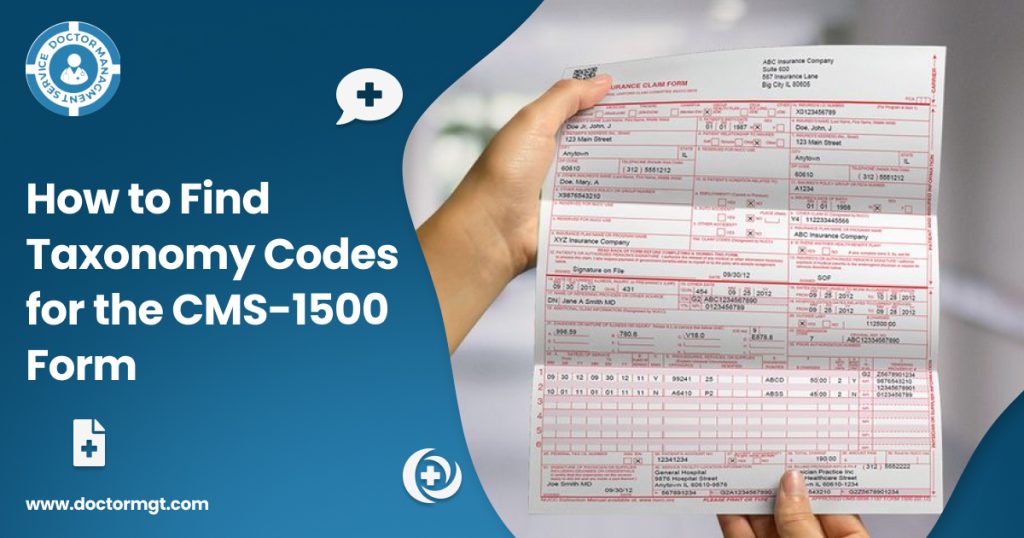Understanding medical billing options is not a simple matter and can confuse when determining which aspects of the CMS-1500 form to focus on. Another insight that seems to have a major role in this picture is the taxonomy code utilization.
These codes are not simply numbers and letters; they are vital to communicating the type of care rendered and having your claims run as smoothly as possible. Therefore, this blog is to assist any healthcare provider in case they need a guide on how to find or use them.
The Role of Taxonomy Codes
Taxonomy identifiers are codes assigned to various healthcare providers depending on the nature of their practice or service given. They assist the insurance industry, Medicare, Medicaid, and other third-party providers know the exact type of service delivered and by who.
Selecting the appropriate taxonomy code is very important as it determines the reimbursement correctly and on time. This is especially relevant for those involved in California Workers’ Compensation Billing to help them adhere to laws within the state as well as to assist in billing effectively.
How to Find Taxonomy Codes
National Plan and Provider Enumeration System (NPPES)
The NPPES is among the most accurate sources of taxonomy codes. It is a CMS-run portal that enables search for codes by specialty or by type of provider. To use this resource:
- Visit the NPPES website.
- Enter your specialty or provider type in the search bar.
- Review the results to find the taxonomy code that best matches your practice.
CMS Taxonomy Code List
The list of codes can be browsed through, and you can search for specific ones by using the search bar. This list is an excellent reference for verifying codes and understanding their descriptions.
To access this list:
- Go to the CMS Taxonomy Codes page.
- Browse the list or use the search function to find specific codes.
- Make sure whatever code that you decide to use correctly demonstrates your practice as well as your specialty.
Professional Associations
To identify taxonomy codes associated with certain specializations many professional medical associations provide triage tools and resources. These tend to be the most current and can give you specifics relevant to your area of operation.
Consider:
- Check the website of your specialty association for coding resources.
- Contact the association for guidance if you have specific questions about taxonomy codes.
Insurance Providers
Supposing you are billing for workers compensation from a specific insurance carrier, then it is wise to liaise with them independently. Sometimes there might be certain company rules, or preferred codes to be used when handling claims by the insurance firms.
To ensure accuracy:
- Review the billing guidelines provided by the insurance carrier.
- Reach out to their support team if you need clarification on which taxonomy codes to use.
Medical Billing Software
Many modern medical billing software solutions come with integrated tools to help providers find and use the correct taxonomy codes. These tools can streamline the billing process and reduce errors. If you’re using billing software:
- Utilize the built-in code lookup tools to find the right taxonomy code.
- Ensure your software is updated regularly to reflect any changes in taxonomy codes.
Applying Taxonomy Codes on the CMS-1500 Form
To make the work easier there is a list of taxonomy codes on the official website of CMS. This list actually helps when confirming codes, as well as when trying to understand the descriptions all in one place.
To access this list:
1. Locate the Taxonomy Code Field:
On the CMS-1500 form, you’ll find the taxonomy code field in Box 33b. This box is specifically designated for entering the taxonomy code of the provider.
2. Double-Check for Accuracy
When doing the submission of the form ensure that you have entered the right taxonomy code. Even a small mistake or discrepancy can result in the denial of a claim or delayed payment.
3. Ensure Consistency
Ensure that the taxonomy code corresponds to the other codes filled in the form such as diagnosis and procedure codes. Any changes made to the CMS-1500 form must be consistent across all sections of the form to allow efficient claims processing.
Practical Tips for Accurate Billing
Here are some tips to streamline the medical billing process:
Stay Informed About Updates
The use of taxonomy codes and different billing rules may vary with time. It’s crucial to stay informed about any updates or changes that may affect the billing practices. Moreover, regularly check CMS and other relevant websites for the latest information.
Verify Before Submission
Always verify the taxonomy code and other details before submitting the CMS-1500 form. Small mistakes can lead to significant delays and issues with reimbursement.
Use Resources Wisely
Use the best of what is available to you; this may be NPPES, CMS taxonomy code list, professional associations, or billing software. These tools will assist you in dealing with the challenges that come with medical billing and enhance accuracy in coding.
Seek Professional Advice
If the physician has ambiguities concerning the proper taxonomy code to select or any other questions concerning billing, then it might be wise to consult a billing specialist. They can guide providers toward best practices for billing and also inform them of any current issues they must adhere to.
Final Words
One of the most challenging aspects of filing the CMS-1500 form is the identification and appropriate utilization of taxonomy codes. Therefore, providers need to check the NPPES and the CMS Taxonomy Code List among other professional resources to learn which codes can benefit their practice.
To any firm dealing with California Workers Compensation Billing, providers need to acquaint themselves with these necessary provisions and update often on matters of regulation. Using the above guidelines together with available tools will help to augment your billing process and increase your possibilities for reimbursement.
Gaining knowledge of taxonomy codes and their usage not only assists in efficient billing but also aids in managing relations with insurance entities. In case any further clarification or assistance is required, you should consult a billing professional or invest in sophisticated billing solutions for your practice.
Here is more information: what not to say to your pain management doctor?







